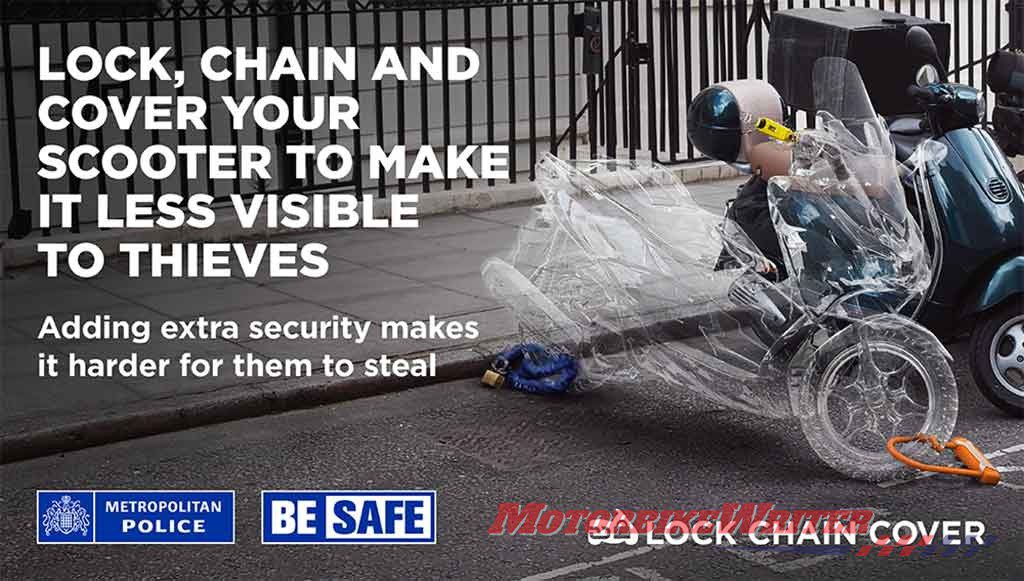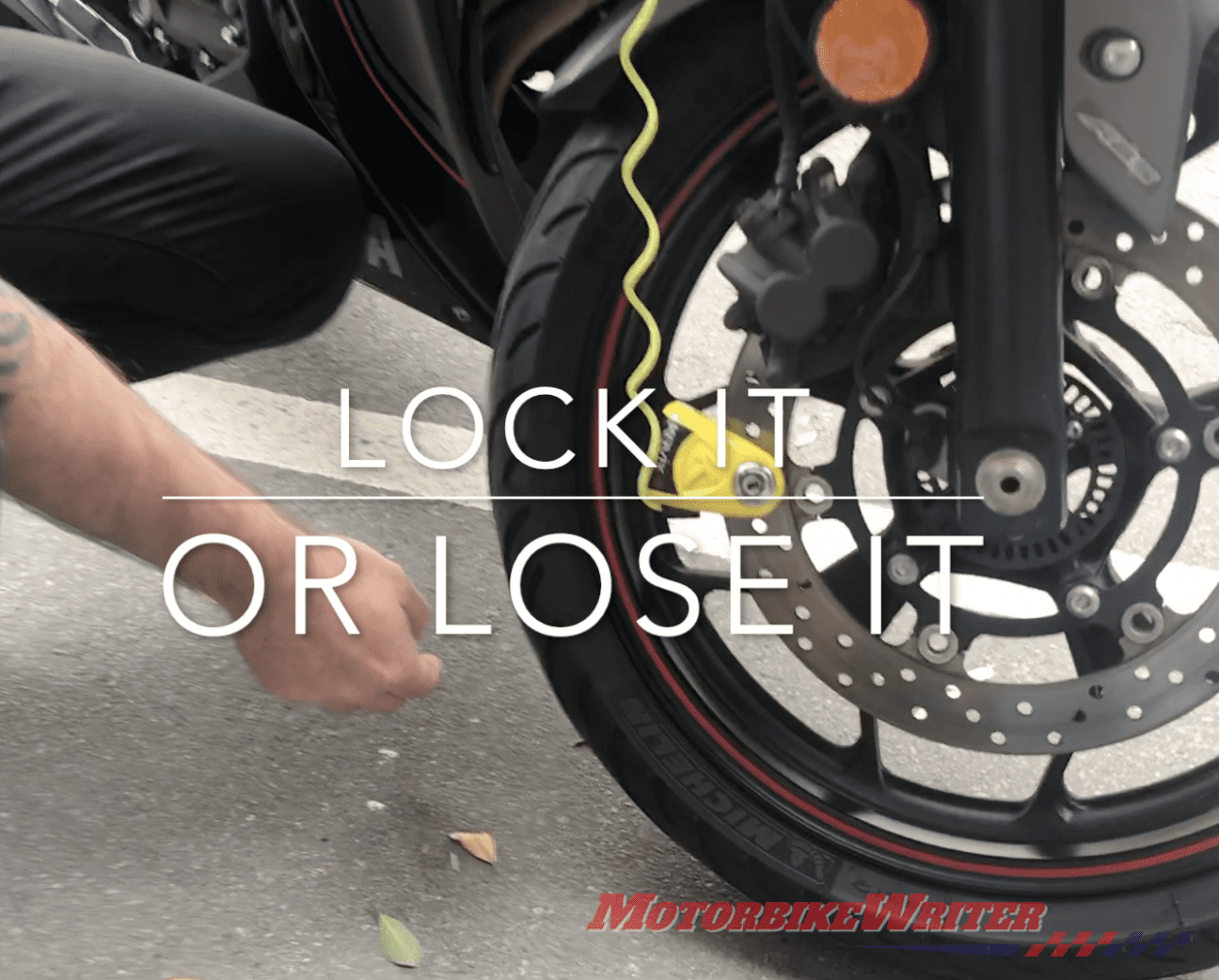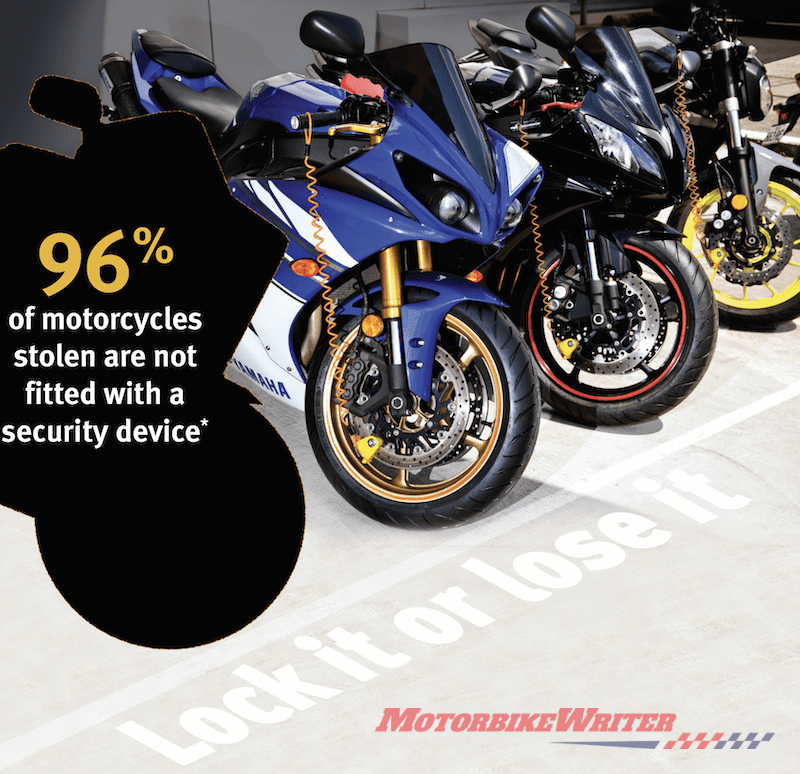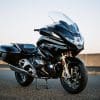Australian riders want better infrastructure and security devices on their motorcycles and scooters, according to a new survey.
While motorcycle thefts were down 26% to 7318 in the 12 months to April 2020, the issue is still important to riders who expressed a strong attachment to their vehicles, the survey has found.
The survey of 186 riders was conducted by the National Motor Vehicle Theft Reduction Council and Motorcycle Council of NSW.
Most respondents were owners of cruiser bikes, followed by tourers and sportsbikes, with an engine capacity of between 726cc and 1125cc. They were mainly recreational riders, taking their motorcycles out once or twice a week. Six were owners of scooters/mopeds.
Motorcycle security at home
The survey pointed to a high level of awareness among motorcycle riders of the need to protect their bikes from theft when at home.
Almost all riders surveyed indicated that they have access to off-street parking at home (98%), with 72% keeping their bikes in a locked shed or garage.
Keeping keys out of sight in the home was the most common security practice employed by riders (59%), followed by using a steering lock (48%) and an immobiliser (40%).
Of the small number of riders who did not use security devices, keeping their bike in a secure and/or alarmed garage was considered sufficient protection, or they were not concerned because their bike was insured.
Most riders (70%) considered it unlikely that their bike would be stolen from the home.
This may in part be due to the high level of compliance with security practices and devices amongst the group.
However, with more than half of all motorcycle theft occurring from the home (57% in 2020), it is important that motorcyclists understand the importance of employing secure practices when home as well as out in the community.
 Motorcycle security when out
Motorcycle security when out
The majority of respondents indicated that they park their bike on the footpath or street when in a public space (71%), with just 17% utilising a secure public car park.
Use of a steering lock was the most common theft prevention practice (61%), followed by an immobiliser (41%) and a disc lock (31%).
Twenty-three riders indicated they did not employ security practices when out, with the fact that their bike is insured being the determining factor. The inconvenience of carrying security devices was also seen as a deterrent.
Interestingly, motorcyclists’ perception of theft risk while out was more ambiguous when compared to the ‘at home’ results.
While 47% of respondents did not consider it likely that their bike would be stolen when out, close to a third were unsure – indicating they felt it was neither likely nor unlikely.
This points to an increased risk perception when in a public space, as well as potentially a sense of being unable to control what happens to a bike parked on the street as opposed to at home.
It is worth noting that the majority of riders surveyed were not daily commuters.
Theft perceptions
The survey highlighted motorcyclists’ strong attachment to their bikes.
Forty-five per cent indicated they would be ‘extremely upset’ if their motorcycle was stolen, with a further 44% who would feel ‘violated’ by knowing someone had interfered with their personal property.
There was also an overwhelming belief that if their bike were to be stolen, it would be unlikely to be recovered (79%), potentially heightening the sense of attachment.
Seventeen per cent had been a victim of motorcycle theft in the past.
Scooter riders
Scooter/moped owners were less inclined to secure their bike in a locked garage or shed (33%), with half parking somewhere at home that was not visible from the street.
This may be because scooter riders are more likely to live in inner-city residences where there is no access to a locked garage or shed.
Among this small sample group, keeping keys out of sight when at home was the security measure most employed (50%), followed by having an immobiliser and using a generic motorcycle cover.
One respondent did not take any security measures at all.
The majority (83%) did not believe that their scooter would be stolen from the home (a higher proportion than owners of other bikes).
Scooter riders were more likely to ride daily. When out, most scooter riders did not employ security practices indicating they were either unsure or perceived it to be unlikely that their scooter would be stolen when out.
Almost all scooter riders said they would be very upset if they were to become a victim of theft.
Overall, survey responses indicate a slight trend towards fewer security practices employed amongst scooter riders when compared to owners of other motorcycles.



How to improve security
Most respondents were keen to see improved public infrastructure for securing parked motorcycles, including:
- Increased posts/bollards with chains/anchor points;
- More secure parking bays;
- The ability to secure bikes to a parking space;
- More CCTV;
- Installation of lockers for helmets and other riding equipment; and
- Better lighting in parking areas.
Riders also indicated a need for improved motorcycle security by manufacturers, including:
- More widely available and affordable GPS tracking;
- VIN-based microdots on all motorcycles;
- Fitment of alarms and immobilisers as OEM;
- A factory alarm with the use of RFID in key; and
- A compulsory register of unregistered/off-road bikes.



 Motorcycle security when out
Motorcycle security when out